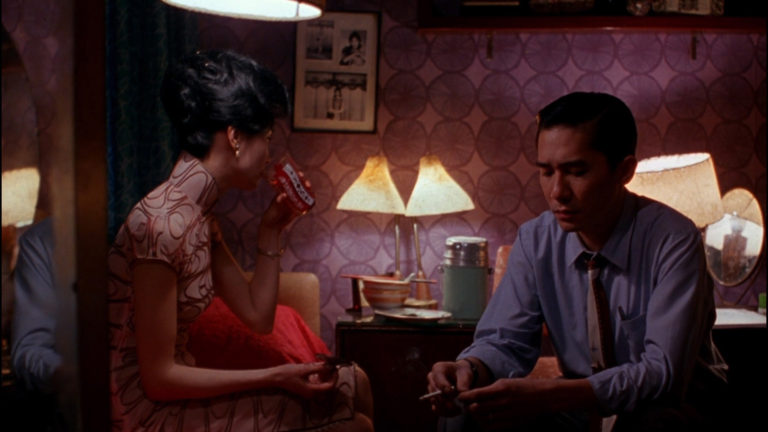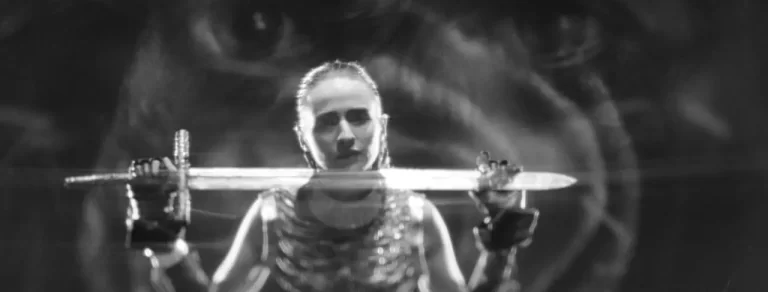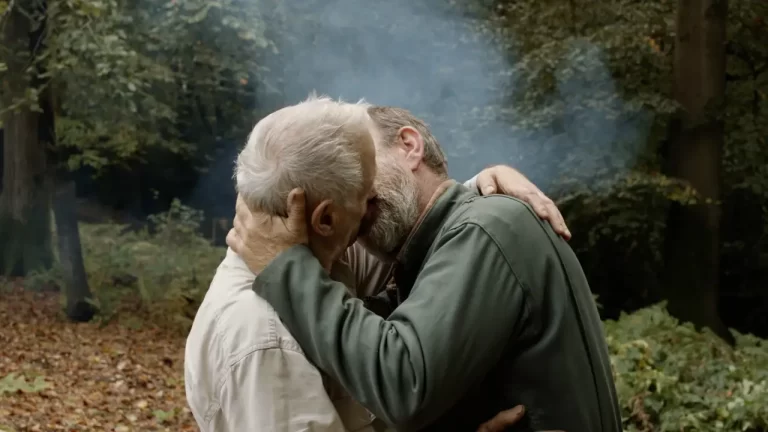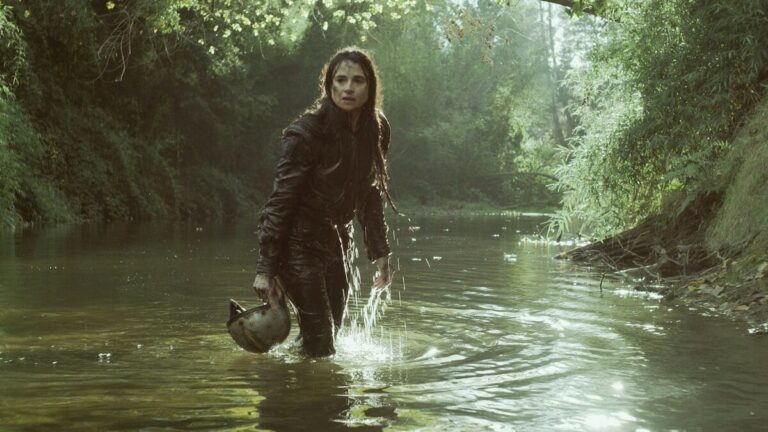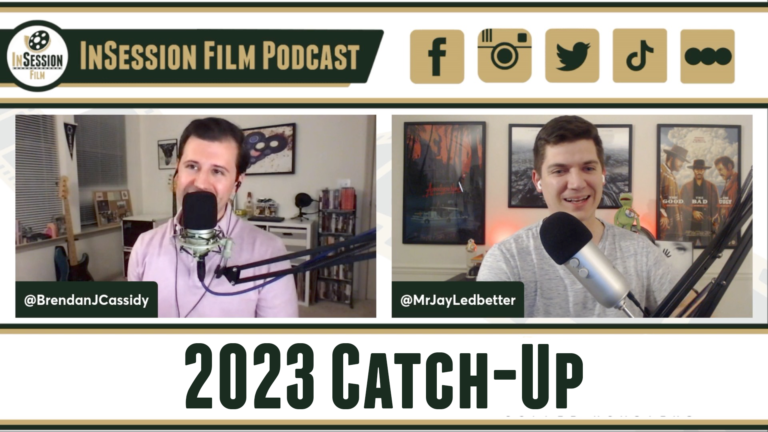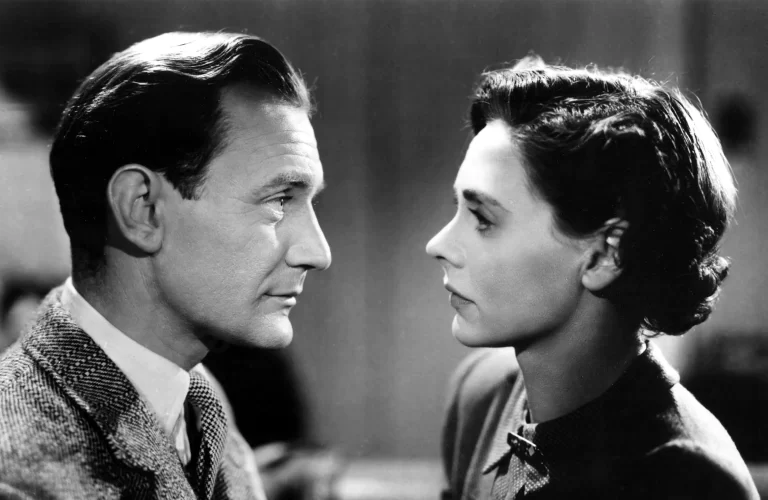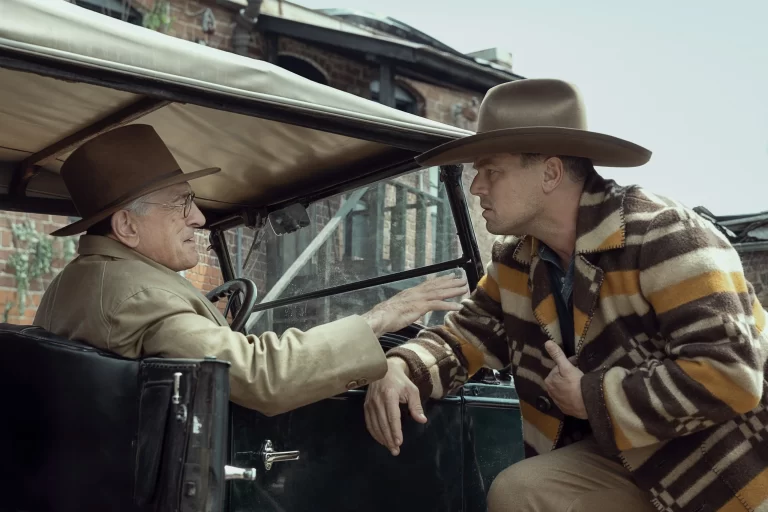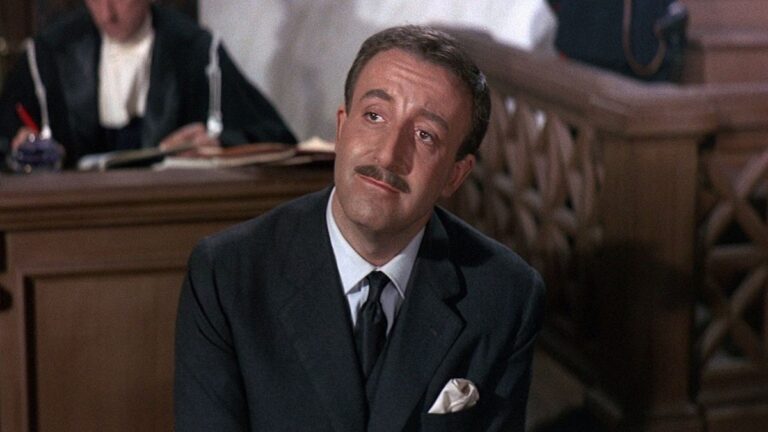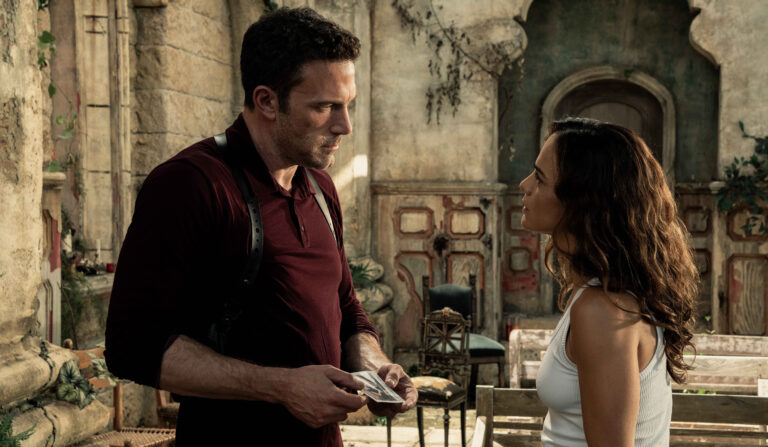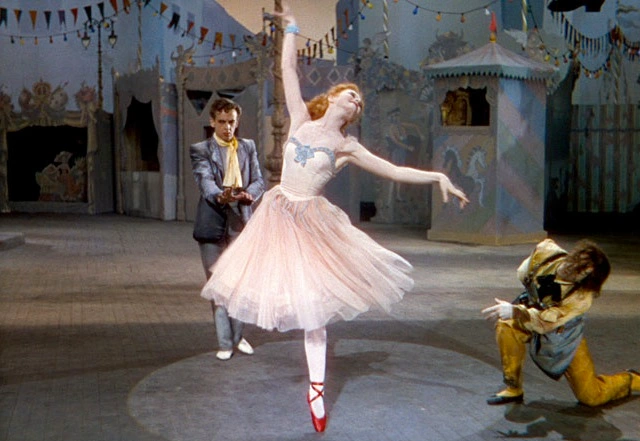When I was a child, I watched reruns of The Pink Panther cartoons that ran from 1969 to 1980. No dialogue, just the titular character doing various hijinks like a silent movie, but with sound effects. That was preferable to the short-lived 90s version in which the Panther had a voice. The cartoon came from the opening and closing credits of the live-action movies where, when I was about 12, I learned the name wasn’t about an actual animated animal. In fact, the Pink Panther refers to a pink diamond that, according to legend, if held up to the light from a certain angle, the figure of a panther can be seen. It is an unintentional flaw, yet it makes the diamond more pristine and worth stealing.
The leader of this search is the bumbling French detective Inspector Clouseau, played famously by the comic legend, Peter Sellers. It came at the height of his fame, in between his performances in Lolita and Dr. Strangelove, both directed by Stanley Kubrick. Originally, the role was written for David Niven, who then elected to play the thief, Sir Charles Lytton, in the first film. Peter Ustinov then committed to the part, but after dropping out, Sellers was cast. Fascinating though was the fact that Blake Edwards, fresh from his acclaim directing Breakfast At Tiffany’s and Days Of Wine And Roses, did not initially write it to be a slapstick comedy or a major franchise.
Edwards was an actor-turned-writer/director who later married Julie Andrews. He was influenced by silent films and the comedies of Buster Keaton, Charlie Chaplin, and Harold Lloyd and his style of directing would use these characteristics. Under Ustinov, Clouseau would’ve been a straightforward detective who gets caught up in misunderstandings, but Sellers’ love for the same films as Edwards allowed for improvisation that made Clouseau a buffoon of a detective. David Niven received top billing as the lead character, but it was Sellers who were a consistent scene-stealer and made The Pink Panther a hit and United Artists commissioned a sequel immediately.
The films in the Edwards/Sellers combo were all scored by longtime collaborator Henry Mancini, whose theme to the movie and series made it synonymous with the cartoon character. The slow jazz brooding to the first tunes of the saxophone gives off this trance which lures you in before a bang involving the rest of the horn section rises. Jazz is a common genre of music in detective mystery films from the 1950s and 1960s, being used for the serious and light-hearted tones of the film. Mancini’s use of tempo allowed the animators to draw their pink panther’s movements to it with the opening and closing credits.
David DePatie and Friz Freleng created the character as this sneaky, smart creature who toys with the cartoon version of Clouseau who goes on the trail yet can’t see the panther, even if it stands in front of him. DePatie and Freleng would make an animated short, The Pink Think, and win an Oscar for it in 1964. They got a second nomination two years later for The Pink Blueprint. For later feature films, the actions of the pink panther and Clouseau would be exaggerated in satirizing other films and imposing the cartoon panther in the live-action final scene. It is this cartoon that burns in my mind foremost and which is what is universally recognized than the name Inspector Clouseau.
A Shot In The Dark, the sequel, also wasn’t meant to be part of the whole Panther sphere. It was based on a French farce that Edwards was to direct already but decided to rewrite the leading investigator in that story as Clouseau. It allows Sellers to expand his comedic muscle and mold Clouseau in his way. In attire, Clouseau wears a distinctive trilby hat and trench coat while sporting a distinct mustache. When he talks, the pronunciations in Sellers’ faux French accent convert certain words to have an “eu” in the middle, such as bomb is “beumb” and room as “reum.” Wherever he goes, he destroys things and fails miserably getting into places because of his lack of awareness. Some of his hidden identities are too ridiculous, yet it gets him into places. In the end, the greatest luck in the world leads to him solving the case.
However, the relationship between Sellers and Edwards soured to the point they vowed never to work with each other again. Within a few years, they reconciled and got back together in 1975 for the third installment, The Return Of The Pink Panther. Using the named diamond as the catalyst again, Clouseau is back in action but with an extra threat: his boss, Chief Inspector Dreyfuss (Herbert Lom). Dreyfuss cannot stand Clouseau for his stupidity, yet is jealously enraged to see him succeed in solving these crimes that it drives him to homicidal madness. Sir Charles Lytton returns, this time played by Christopher Plummer, and he goes from retired jewel thief to wanted man after learning the diamond’s theft is blamed on him. The Return received much critical and commercial acclaim, reviving Sellars’ fortunes as a major comedy movie star. The fourth installment, The Pink Panther Strikes Again, was commissioned immediately, this time completely focusing on the Dreyfuss’ lunacy for wanting Clouseau dead and blackmailing every nation to send their best assassin to kill him.
Financially successful again, the fifth film was then green-lit, but by now, a decline for the whole series started to be felt, and the relationship between Sellers and Edwards once again soured. This time, Sellers, who wasn’t happy with the final product in Strikes Again, was able to contractually get story approval and producer credit for Revenge Of The Pink Panther, released in 1978. Financially less successful than the previous films, Edwards stepped away originally from directing a sixth feature, this one completely scripted by Sellers, before the comedian’s sudden death on July 24th, 1980. Returning to the series, Edwards decided to make the sixth feature, Trail Of The Pink Panther, assembled around outtakes of Sellers from the previous films around new footage of a journalist who tries to find out if Clouseau is indeed deceased.
Released in 1982, this time, the legacy of Sellers and the wrap-up of his performance as Inspector Clouseau did not have critical support and barely broke even at the box office. Worse, Sellers’ widow successfully sued Edwards, United Artists, and MGM for damages as they were contractually obliged not to use outtakes without permission from the estate. Edwards would make two more Panther features, Curse Of The Pink Panther in 1983, and Son Of The Pink Panther in 1993 starring Roberto Bengini as Clouseau’s illegitimate son. Both were complete flops, and the series came to an official end.
Of course, there were the two reboot films starring Steve Martin in 2006 and 2009, but both were nowhere close to what the Edwards/Sellers collaboration accomplished. Currently, another reboot is in the works, this time a CGI animated/live-action hybrid version that is to be produced by Julie Andrews. Blake Edwards, who retired after making Son Of, died in 2011. Frankly, they should leave it be. It is impossible to capture the same classic humor and silliness that Sellers was able to open naturally and how Edwards was able to capture all of it in consecutive films. As much as it is Seller’s unchallenged talent, it is never easy for one director to continue making high-quality features without getting lazy. This is the legacy of these two titans for a highly acclaimed series.
Follow me on Twitter: @brian_cine (Cine-A-Man)



